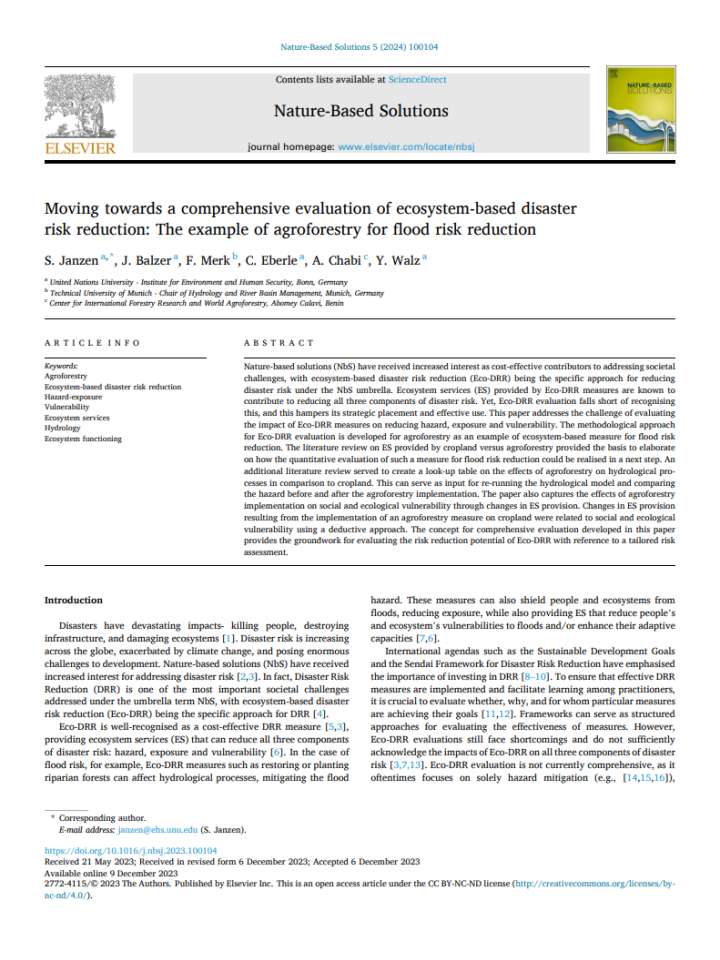Moving towards a comprehensive evaluation of ecosystem-based disaster risk reduction: The example of agroforestry for flood risk reduction
This paper addresses the challenge of evaluating the impact of Eco-DRR measures on reducing hazard, exposure and vulnerability. Nature-based solutions (NbS) have received increased interest as cost-effective contributors to addressing societal challenges, with ecosystem-based disaster risk reduction (Eco-DRR) being the specific approach for reducing disaster risk under the NbS umbrella. Ecosystem services (ES) provided by Eco-DRR measures are known to contribute to reducing all three components of disaster risk. Yet, Eco-DRR evaluation falls short of recognising this, and this hampers its strategic placement and effective use.
This publication recommends understanding which biophysical processes affecting the hazard are altered and how. Results can be collected in a look-up table, which serves to re-run the hazard model and evaluate changes to a given hazard. The next step for the evaluation of agroforestry would be using this output to re-run the hydrological model and comparing hazard depth and extent before and after. The change in hazard extent in turn would allow assessing changes to exposure in a spatially explicit manner.
Explore further
